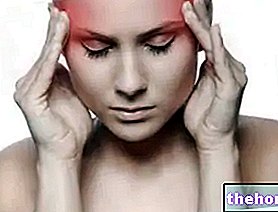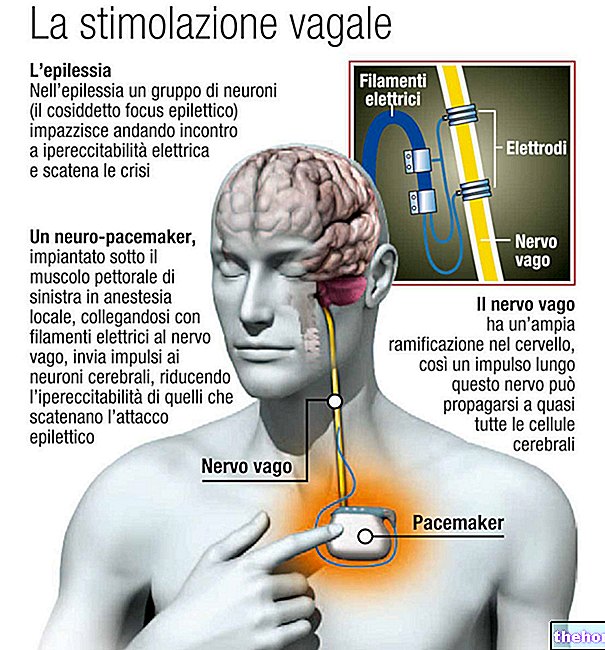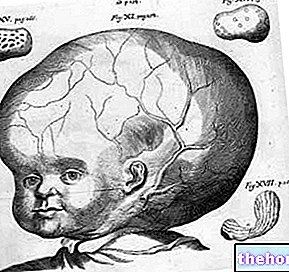Generality
Radiculopathy is a pathological condition that affects the roots of the spinal nerves and their extensions, with consequent involvement of the motor and sensory functions of the body.

There are different forms of radiculopathy, but the most common seem to be those that occur at the cervical level (we therefore speak of cervical radiculopathies) and at the lumbar and sacral level (in this case, we are talking about lumbo-sacral radiculopathies).
Causes
In most cases, radiculopathy is caused by compression of the spinal nerve roots. In turn, these compressions can be caused by various diseases and disorders, such as:
- Rheumatoid arthritis;
- Disc hernias;
- Meningitis which can extend to the roots of the spinal nerves;
- Presence of osteophytes;
- Scoliosis;
- Thickening of the surrounding ligaments;
- Spinal neoplasms (however, it is a rather rare event that this type of neoplasms give rise to radiculopathy).
In addition, infections caused by Shingles, Lyme disease, syphilis and histoplasmosis can be the cause of radiculopathy. In other cases, this disorder can be one of the complications of diabetes.
Finally, radiculopathy can also be caused by trauma to the spine (as occurs, for example, in the case of a fracture of the vertebrae); not surprisingly, patients who practice certain types of sports or who perform heavy work involving frequent and excessive loads on the spine are exposed to a greater risk of developing this pathological condition.
Symptoms
Depending on the nerve root involved, and depending on the extent of the nerve damage, the symptoms triggered by radiculopathy can be different and affect various parts of the body.
In fact, the spinal nerves control different parts of the body and this is why cervical radiculopathy produces typical symptoms in the neck, while the lumbar one causes characteristic symptoms in the lower limbs.
In any case, among the main symptoms that can appear in case of radiculopathy, we remember:
- Asthenia;
- Hyperalgesia;
- Pain in various areas of the body (neck, feet, lower and upper limbs, back, shoulders, joints) which can be exacerbated by the execution of various types of movements;
- Hyperreflexia;
- Hypoesthesia;
- Paresthesia;
- Muscle stiffness and weakness;
- Spastic tetraparesis.
Furthermore, low back radiculopathy, when it affects several nerve roots at the same time, can give rise to serious complications such as sphincter changes and sexual dysfunctions.
In any case, for more detailed information, please refer to the "Radiculopathy Symptoms" article already present on this site.
Diagnosis
The diagnosis of radiculopathy must be made by the doctor, who will evaluate all the symptoms presented by the patient. In addition to this, the doctor may resort to performing specific tests, such as, for example, CT scan, magnetic resonance imaging, X-rays. , electromyography and blood tests, in order to definitively confirm his diagnosis.
Naturally, once the presence of radiculopathy has been ascertained, it is necessary to identify the triggering cause in order to establish the most appropriate treatment for each individual case.
Treatment
As mentioned, for the treatment of radiculopathy it is, first of all, fundamental to identify the triggering cause and to intervene on the latter.
However, since radiculopathy is a painful disorder, the symptoms of which can significantly affect the quality of life of patients who suffer from it, the doctor may decide to prescribe the administration of drugs to control pain and other symptoms associated with it. particular pathological condition.
Among the different drugs that can be used in the control of the symptoms of radiculopathy, we remember:
- Non-steroidal anti-inflammatory drugs (NSAIDs), such as, for example, ibuprofen, ketoprofen or naproxen. These active ingredients, thanks to their particular mechanism of action, are able to exert both an analgesic and anti-inflammatory action. Thanks to the use of NSAIDs, therefore, not only can pain control be obtained, but it is also possible to counteract the inflammation of the nerve affected by radiculopathy.
Among the main side effects caused by this large category of drugs, we remember those that occur at the gastrointestinal level (gastrointestinal damage). - Antidepressants belonging to the class of tricyclics (such as clomipramine) and to the class of selective serotonin and noradrenaline reuptake inhibitors (such as duloxetine). These active ingredients are normally used in the treatment of depression; however, they have also proved particularly effective in counteracting neuropathic pain, which can occur in the event of damage to the nerves, therefore also in the case of radiculopathy.
The side effects induced by these drugs can vary greatly depending on the active ingredient used. - Anticonvulsants, such as gabapentin and pregabalin. These active ingredients - normally used in the treatment of epilepsy - have also been shown to be effective in treating neuropathic pain.
Among the main side effects that can occur following the use of the aforementioned anticonvulsant drugs, we remember dizziness and drowsiness. - Muscle relaxants, such as tizanidine and baclofen. These active ingredients are used for the treatment of spasticity which can be one of the symptoms of radiculopathy.
Among the adverse effects that can occur following the intake of these drugs, we find: sedation, marked muscle weakness and dizziness.
In addition, if necessary, the doctor may suggest that the patient also undergo physical therapy (for example, thermotherapy or massage).
Usually, most patients affected by radiculopathy respond well to conservative treatments, both physical and pharmacological.
However, in severe cases of radiculopathy, surgical treatment (e.g. laminectomy or discectomy) may be necessary.




























